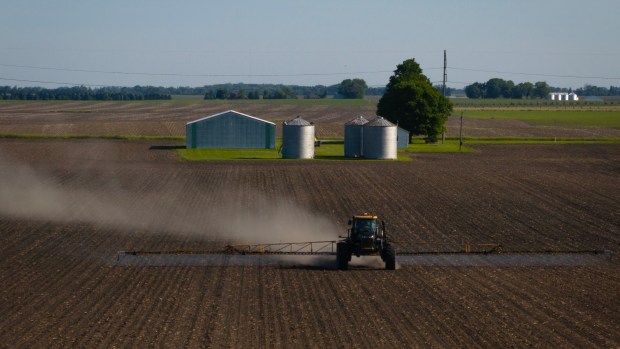A discussion at a recent Clarendon Hills Village Board meeting is likely to be echoed in nearby communities and beyond within the next several months.
Officials in Clarendon Hills were discussing the elimination of the 1% statewide grocery tax, which is due to be effective Jan. 1, 2026. While that tax no longer will exist, municipalities have the authority to implement a 1% local grocery sales tax by ordinance. This authority applies to both home rule and non-home rule municipalities and ensures that municipalities wishing to retain this revenue source may do so without interruption.
The Clarendon Hills Village Board and staff discussed the grocery tax at a Feb. 10 meeting, and the board is expected to take action soon. First consideration of the ordinance for approval and adoption of a local grocery sales tax is scheduled for the March 17 board meeting, and second consideration and a vote for passage is to take place at the April 21 meeting, said Clarendon Hills Finance Director Maureen Potempa.
While discussions about implementing a local grocery tax, beginning at the start of 2026, have not yet taken place, plans exist to do so later in the year in Hinsdale, La Grange, Western Springs and Burr Ridge.
In Hinsdale, Village Manager Kathleen Gargano said the possibility of implementing a local grocery tax will be addressed by the state’s October deadline.
It’s the same case in La Grange, where Village Manager Jack Knight said local officials plan to have a discussion later this year about a local tax.
Western Springs Village Manager Ellen Baer said village trustees have not yet discussed implementing a local tax, but it will “likely be on their agenda” later this year.
Baer said the existing 1% state grocery tax brings approximately $580,000 in revenue each year in Western Springs.
“The village does not yet have an established funding source to replace that lost revenue,” she said.
Burr Ridge Village Administrator Evan Walter said the village has not yet formally discussed the option of a local grocery tax, but will be doing so as part of budget discussions in a few weeks.
Walter said Burr Ridge generates about $200,000 a year from existing grocery tax.
“This is about 5% of our total sales tax receipts,” he said. “Given that our draft fiscal year 2026 budget has been drafted and balanced without adoption of this budget, we are not in a position to have to rush a decision.”
In Clarendon Hills, Potempa said implementing a local grocery tax would prevent the loss of a significant revenue source, as grocery tax revenue represents approximately 30% of the village’s total sales tax revenue.
For calendar year 2023, Clarendon Hills had total sales tax revenues of $1,235,448, meaning that its grocery tax revenue was about $370,600. Payments for 2024 have not yet been completed, Potempa said.
“Replacing this (grocery tax) loss through property tax increases would require several years of maximum allowable increases under the current 5% cap,” she said. “To maintain financial stability and ensure uninterrupted revenue to support essential local services and operations, it is crucial to adopt the proposed ordinance, authorizing a local grocery sales tax.”
The existing 1% Illinois grocery tax applies to food for human consumption that is to be consumed off the premises where it is sold. The new bill allowing for municipalities to implement a local grocery tax starting in 2026, has language that allows for the same impact.
Chuck Fieldman is a freelance reporter for Pioneer Press.





